Description
Buy Melitor Agomelatine 25 mg tablets #28
Description of Melitor Agomelatine 25 mg:
This is an atypical antidepressant drug developed on the basis that abnormal circadian rhythm causes depression.
While most other (typical) antidepressant drugs are selective serotonin reuptake inhibitors (SSRIs) that seek to increase serotonin in the brain, agomelatine activates melatonin (MT1 and MT2) receptors and blocks the 5-HT2C serotonin receptors.
Melitor is used in the treatment of depression or to help prevent depression returning. The symptoms of depression vary from one person to another, but commonly include persistent sadness, loss of interest in favourite activities, feelings of worthlessness, sleep problems, feeling of being slowed down, feelings of anxiety or changes in appetite and weight. Changes in your daily sleep and appetite patterns are examples of disturbances of your ‘body clock’ that occur commonly in depression.
Melitor can help regulate your ‘body clock’ (circadian rhythm) with positive benefits on mood and sleep in depression.
Melitor is not addictive.
In clinical studies AGOMELATINE had no effect on sexual function.
Melitor (AGOMELATINE) is not recommended for children, adolescents (under 18 years old) or elderly patients aged 75 or older.
Ingredients:
1 film-coated tablet of MELITOR contains 25 mg of Agomelatine as the active ingredient and the following inactive ingredients: lactose monohydrate, maize starch, povidone, sodium starch glycollate, stearic acid, magnesium stearate, colloidal anhydrous silica, hypromellose…
Pharmacologial Properties of Melitor Agomelatine 25 mg:
Pharmacodynamic Properties of Melitor Agomelatine 25 mg:
Mechanism of action
Agomelatine is a melatonergic MT1 and MT2 receptor agonist and a 5-HT2c receptor antagonist. Receptor binding studies of agomelatine have shown that agomelatine does not affect monoamine uptake and is not related to the α- and β-adrenergic, histaminergic, cholinergic, dopaminergic, and benzodiazepine drugs.
In animal studies with circadian rhythm disorders, agomelatine has been shown to resynchronize circadian rhythms.
Agomelatine increases the release of dopamine and norepinephrine, especially in the frontal cortex, and does not affect extracellular serotonin levels.
Pharmacodynamic effects
In experimental animal studies, agomelatine has demonstrated an antidepressant effect in validated models of depression (test of hopelessness, despair, chronic mild stress), as well as models with circadian rhythm desynchronization and models associated with stress and anxiety.
When used in humans, agomelatine resynchronizes circadian rhythms; it restores sleep phasing, leads to a decrease in body temperature and promotes the secretion of melatonin.
Pharmacokinetic Properties of Melitor Agomelatine 25 mg:
Absorption and bioavailability
Agomelatine is rapidly and well (≥80%) absorbed after oral administration. Absolute bioavailability is low (<5% when administered orally at a therapeutic dose); individual variability is significant. Bioavailability in women is higher than in men. Bioavailability increases with the use of oral contraceptives and decreases in smokers. The maximum plasma concentration is reached within 1-2 hours.
When used in therapeutic doses, the concentration of agomelatine increases in proportion to the increase in dose. When used in higher doses, the effect of saturation with the first dose appears.
Food intake (regular or high fat) does not affect bioavailability or absorption rates.
Variability increases with high-fat meals.
Distribution in tissues
The volume of distribution at steady state is about 35 liters; plasma protein binding is 95% regardless of concentration and does not change with age and in patients with impaired renal function, but the concentration of the free fraction doubles in patients with impaired liver function.
Biotransformation
After administration, agomelatine is rapidly metabolized primarily by hepatic CYP1A2 enzymes; isoenzymes CYP2C9 and CYP2C19 are also involved in metabolism, but their contribution is insignificant. The main metabolites, hydroxylated and dimethylated agomelatine, are inactive and are rapidly conjugated and excreted in the urine.
Conclusion
Excretion from the body is fast, the half-life from blood plasma is on average 1-2 hours. Clearance is high (approximately 1.1 ml/min) and predominantly metabolic. It is excreted mainly in the urine (80%) in the form of metabolites, while the amount of the active substance excreted in the urine in unchanged form is insignificant. Pharmacokinetics does not change after repeated use.
Patients with impaired renal function
In patients with severely impaired renal function, no relevant changes in the pharmacokinetic parameters of agomelatine were observed (n = 8, a single dose of 25 mg), but in patients with severe or moderate renal impairment Melitor should be administered with caution due to the limited number of clinical data on the use of the drug. in this group of patients (see section “Method of application and doses”).
Patients with impaired liver function
A special study in patients with cirrhosis of the liver, mild to moderate chronic hepatic impairment (Child-Pugh type A and B) showed an increase (70 and 140 times, respectively) in the concentration of agomelatine used at a dose of 25 mg, compared with such in volunteers of the appropriate age, body weight and habit of smoking without impaired liver function (see section “Method of application and doses”, “Contraindications” and “Peculiarities of use”).
Elderly patients
A pharmacokinetic study in elderly patients (≥ 65 years) showed that when using the drug at a dose of 25 mg, the average value of AUC and Cmax was approximately 4 and 13 times higher in patients aged ≥ 75 years compared with those in patients in age < 75 years. It is not possible to evaluate the pharmacokinetics of agomelatine at a dose of 50 mg in this population due to insufficient data. Elderly patients do not need dose adjustment.
Ethnic groups
Data on the features of the pharmacokinetics of agomelatine depending on race are not available.
Indications of Melitor Agomelatine 25 mg:
Used in the Treatment of Depression or to help prevent depression returning. The symptoms of depression:
- persistent sadness;
- oss of interest in favourite activities;
- feelings of worthlessness;
- sleep problems;
- feeling of being slowed down;
- feelings of anxiety or changes in appetite and weight.
Bone Loss and Muscle Atrophy. Agomelatine consistently raises both IGF-1 and growth hormone levels by stimulating melatonin receptors, which regulate hormone secretion during sleep. This is beneficial not only to healthy bone development, but also for prevention of bone loss and muscle atrophy.
By increasing IGF-1 and growth hormone secretion, while simultaneously reducing catabolic proinflammatory cytokines, agomelatine may even enhance muscle strength.
Contraindications of Melitor Agomelatine 25 mg:
- liver disease or hepatic impairment;
- blood tests show levels of liver enzymes have increased to more than 3 times the upper limit of normal;
- allergy to MELITOR or any of the ingredients (including lactose).
Side effects:
- Feeling sick (nausea), diarrhoea. Stick to simple foods (avoid fatty or spicy meals) and drink plenty of water;
- Feeling dizzy, tired or sleepy. Do not drive or use tools or machines. Do not drink alcohol;
- Headache. Ask your pharmacist to recommend a suitable painkiller. If the headache continues, speak with your doctor;
- Constipation, tummy (abdominal) pain. Try to eat a well-balanced diet containing fresh fruit and vegetables. Drink plenty of water;
- Difficulty sleeping, feeling anxious, increased sweating, back pain. These effects are usually mild and soon pass but if any become troublesome, speak with your doctor.
Overdose of Melitor Agomelatine 25 mg:
The experience of overdoses with Melitor is limited but reported symptoms include stomach pain, drowsiness, tiredness, agitation, anxiety, dizziness, blue-ish discolouration of the skin or mucous membranes and/or a general feeling of being unwell.
Storage:
Keep out of the reach and sight of children.
Store in a cool, dry place where it stays below 30°C, away from direct heat and light.
Shelf life:
5 years.

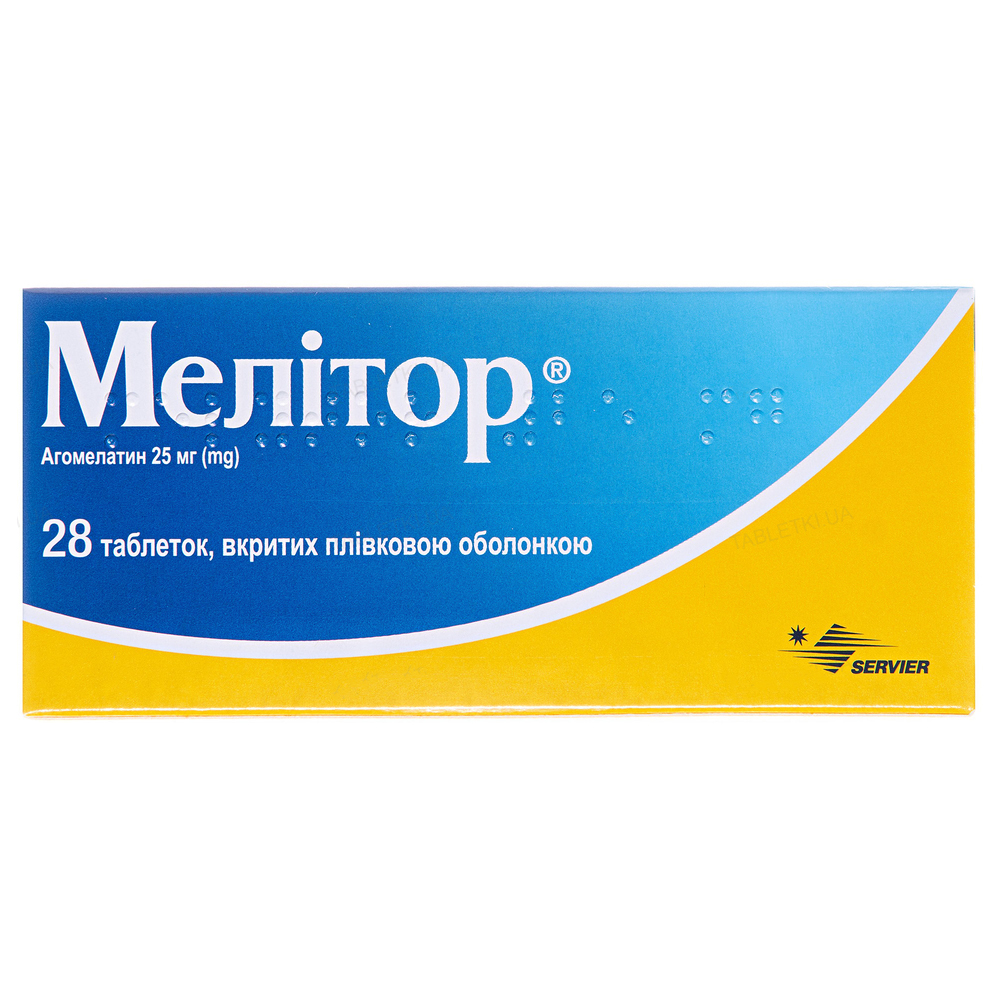
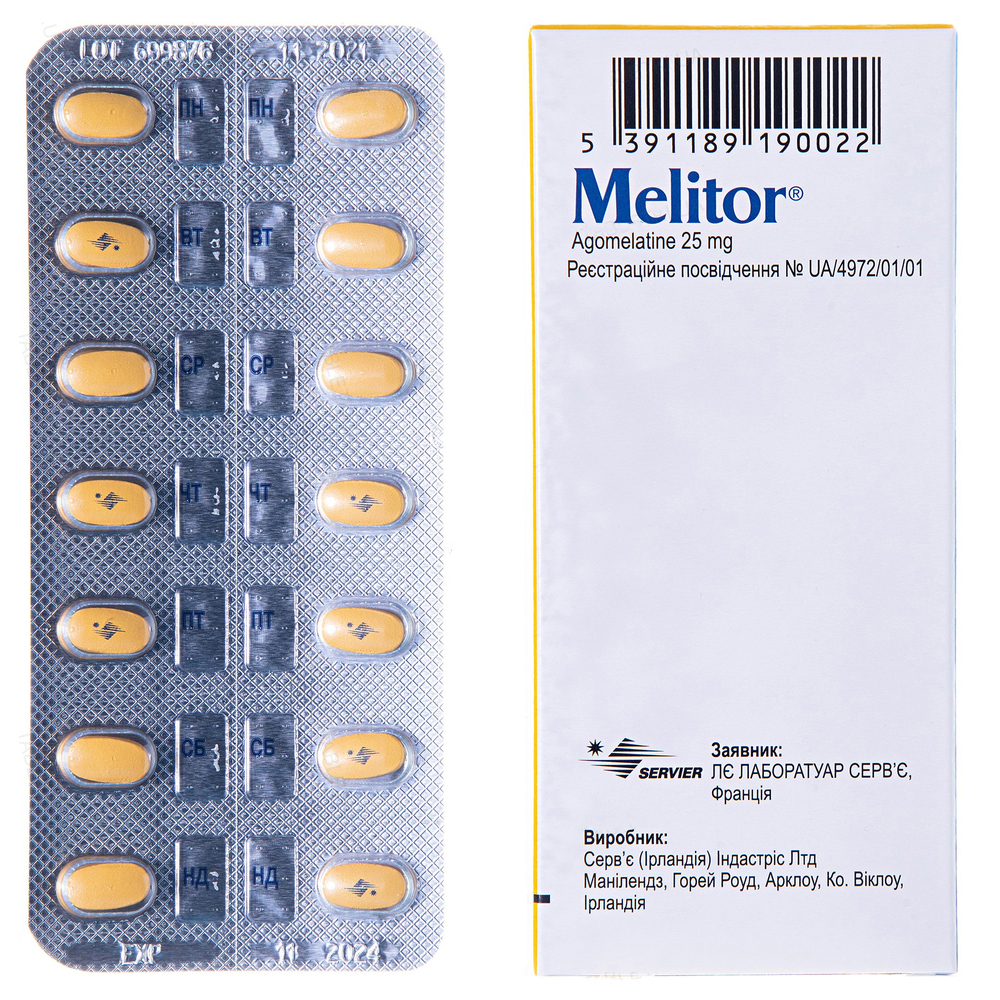
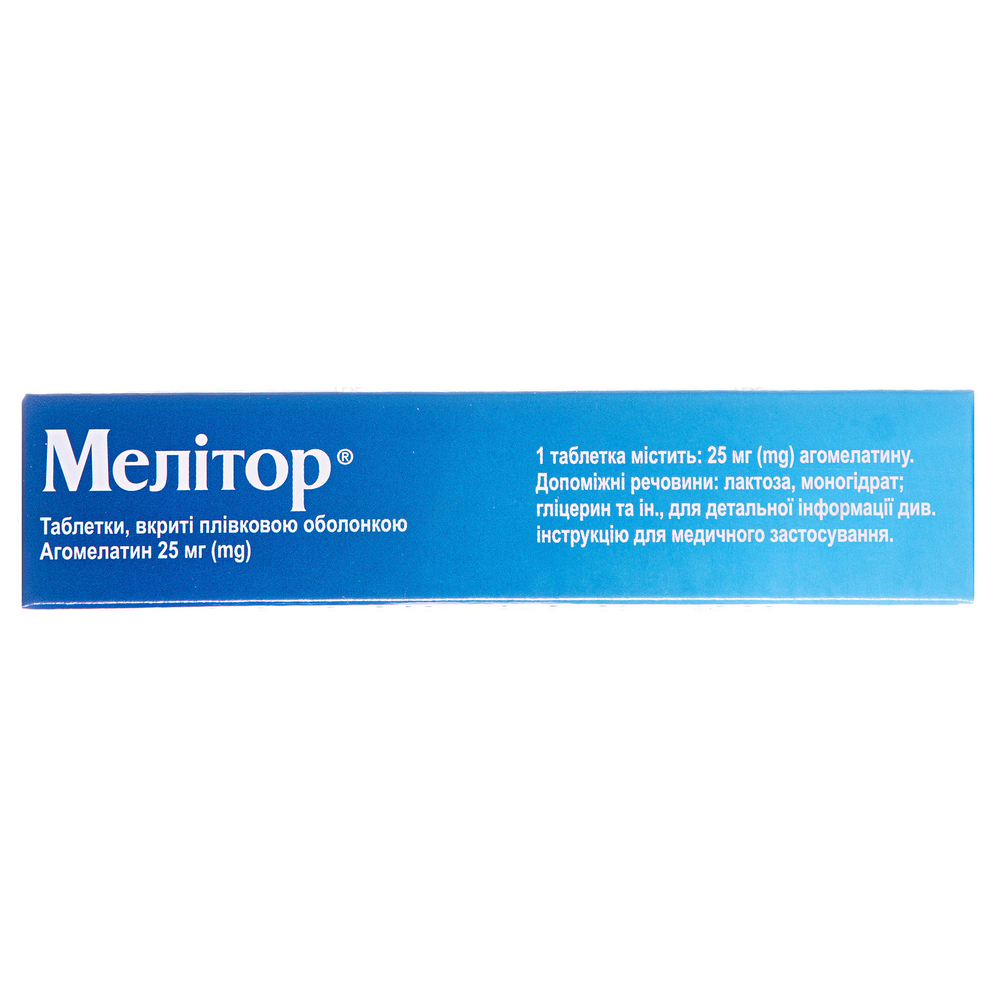


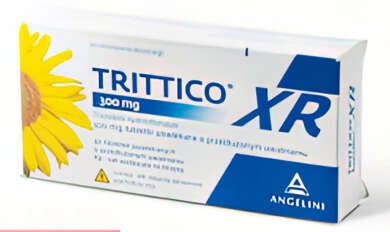
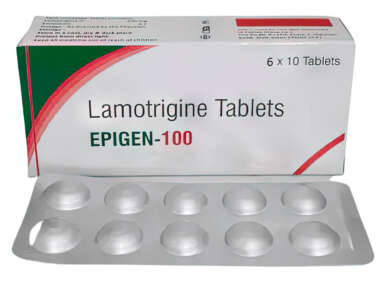
Reviews
There are no reviews yet.